Dates:
Location:
Virtual Exhibition
Dogs have been working companions to Inuit for over 1000 years, yet social and environmental changes are threatening their place in Inuit society. This photo exhibit examines past and contemporary use of dogs.
Selected Works
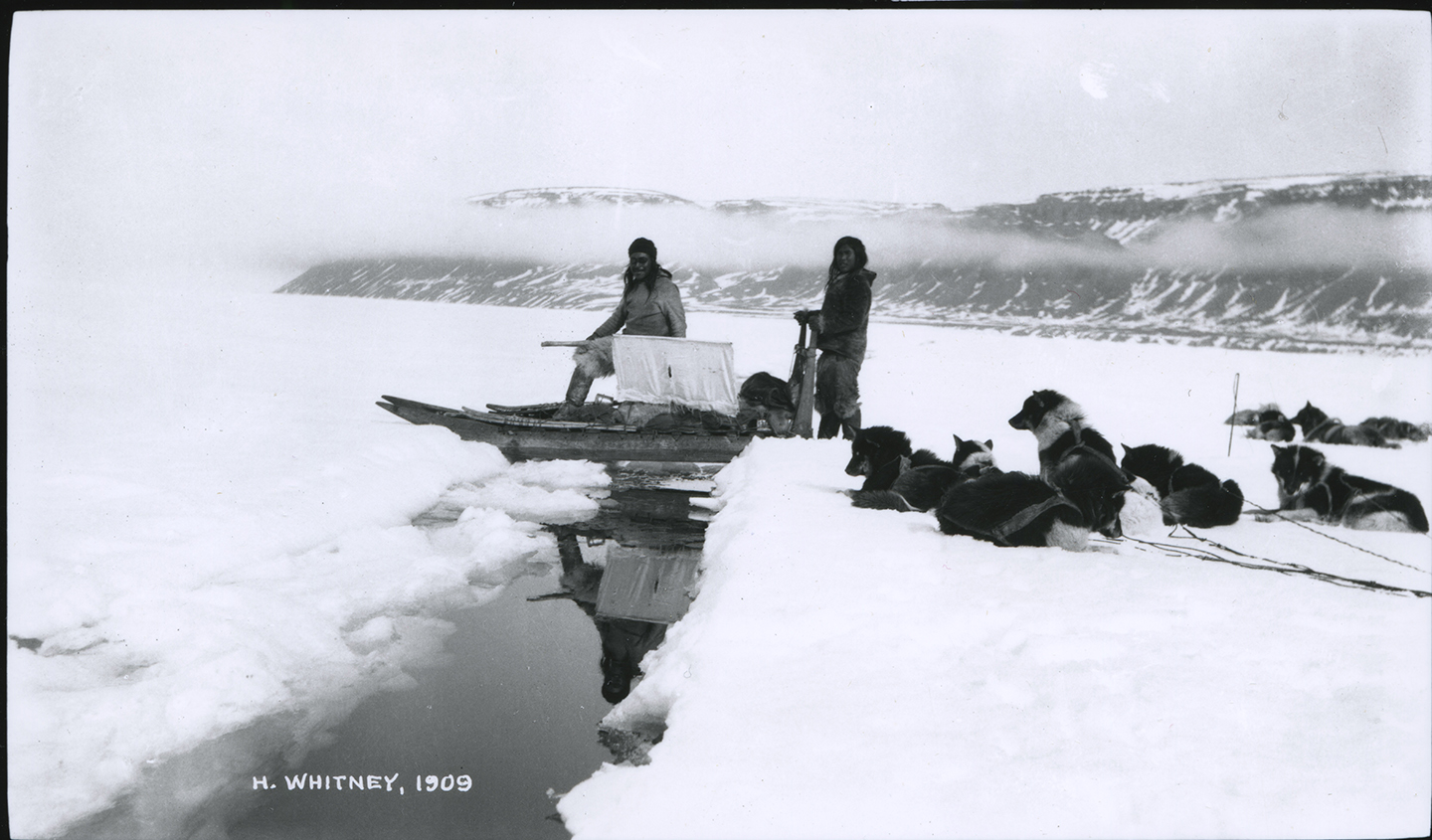
Spanning a lead with a dog sled. Cracks, called “leads,” form even in the thickest ice and this open water poses a danger to unwary travelers. Dogs know enough to stop before they fall into leads and can sense the open water even if poor visibility means they, or the sledge driver, cannot see it. Hunters who use dog sledges today say they prefer dogs to snow machines because dogs’ abilities make travel on sea ice safer. Also, unlike snow machines, dogs can find their way home in darkness or white-out conditions. Photograph by Harry Whitney, Spanning a Lead With Dog-sled, Smith Sound, 1909. Scan from gelatin silver print. Gift of the Alphonse Kenison Estate.
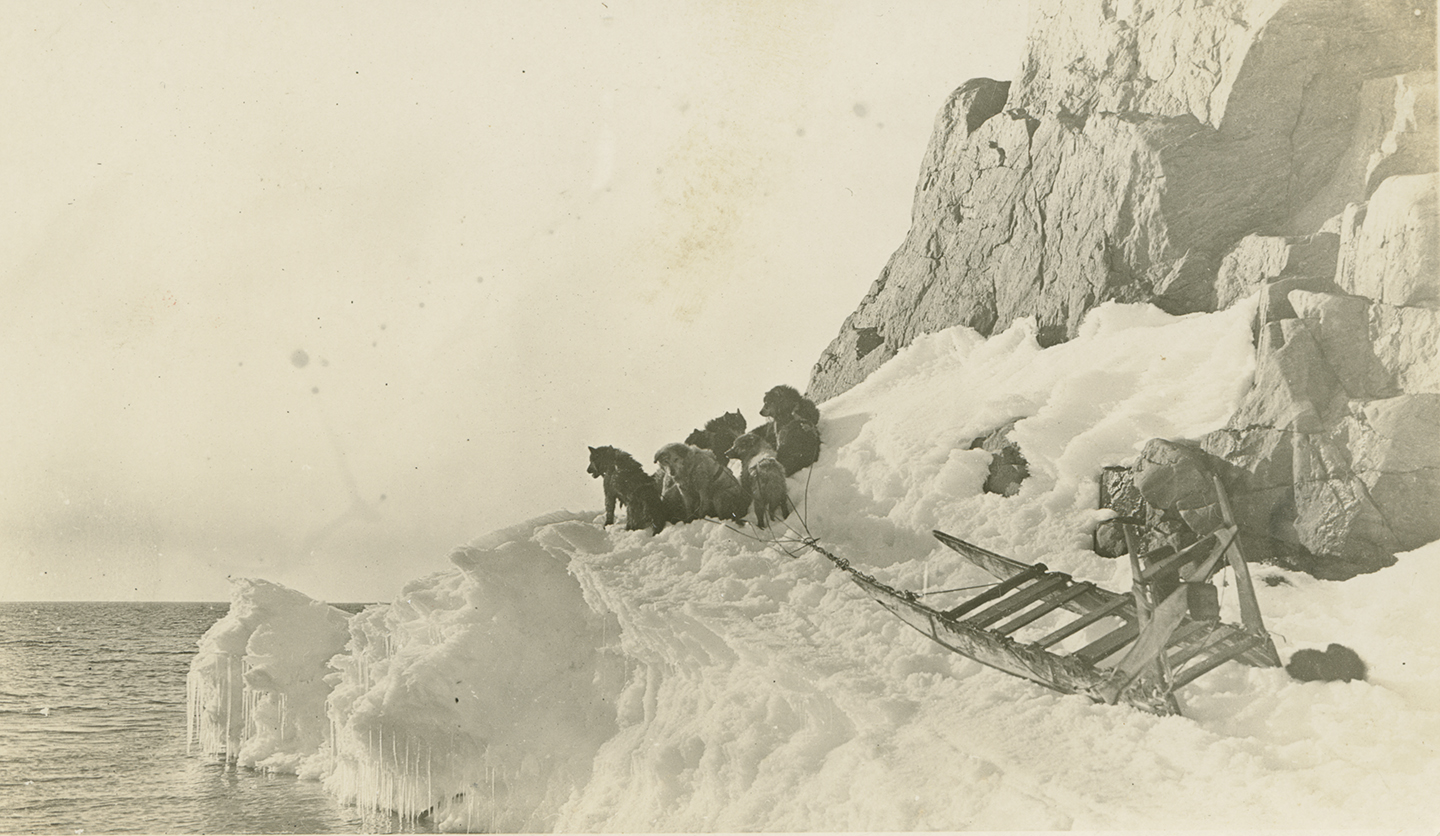
Dogs are agile and courageous, although in some situations they may need some coaxing. In late spring, after most of the sea ice has melted, a fringe of ice frozen to the land, called the “ice foot,” can persist, extending the season of travel by dog team. These dogs seem doubtful about proceeding, but the tracks in the snow suggest others have gone before them. Unidentified photographer, Team on Ice Foot, Northwest Greenland, 1924. Scan from gelatin silver print. Museum purchase.
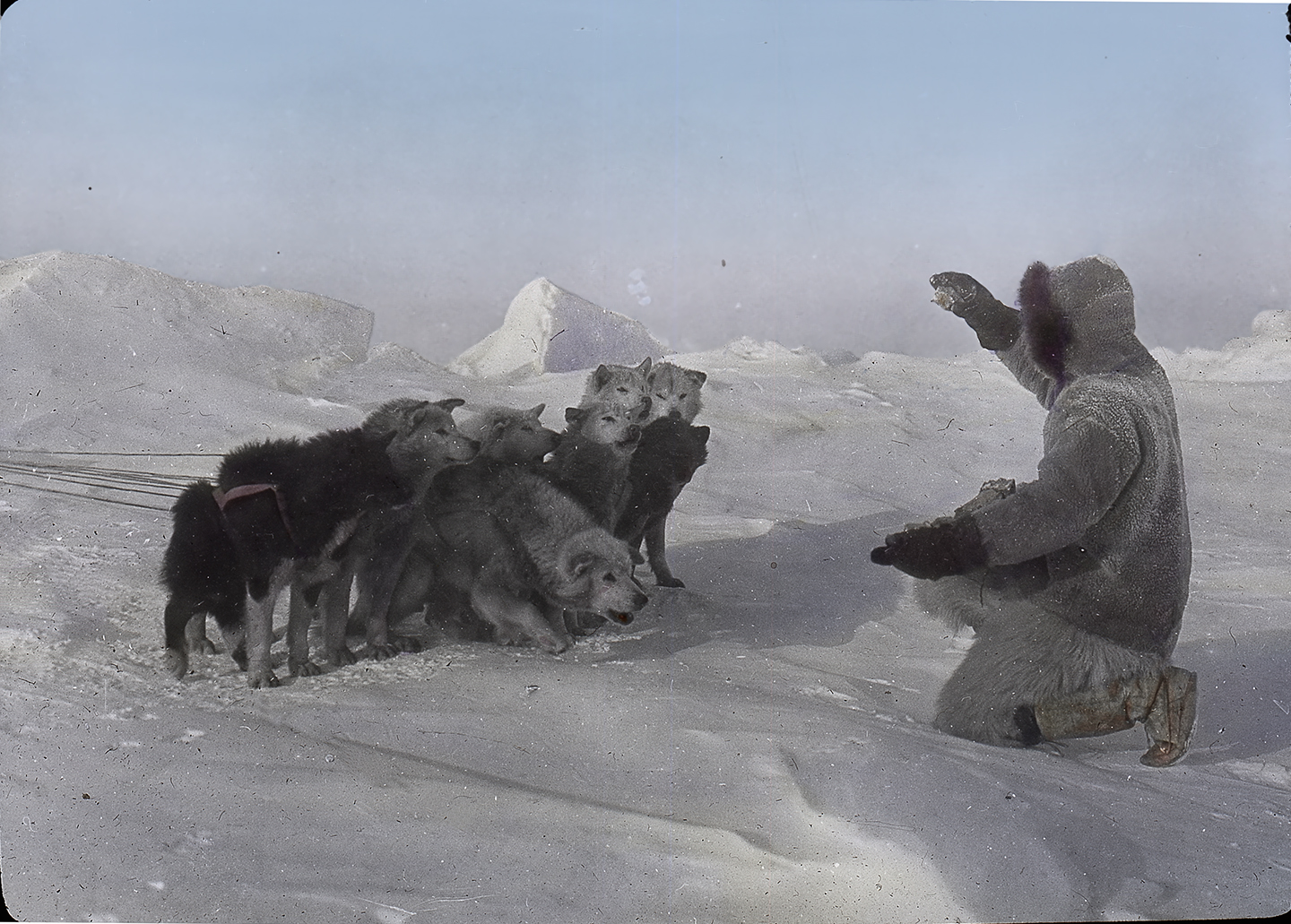
Sled dogs have voracious appetites and will eat just about anything. Here Donald MacMillan is feeding his dogs frozen meat. The dogs are tied up to prevent them from eating things they should not, including skin clothing. Today, hunters often supplement their dogs’ diet with commercial dog food. Although such food is expensive, it can be more cost effective than feeding the dogs hunted meat, which can feed a human family instead. Unidentified photographer, [Donald] MacMillan Feeding His Dogs, Arctic Ocean, 1914. Scan from hand-tinted glass lantern slide. Gift of Donald and Miriam MacMillan.
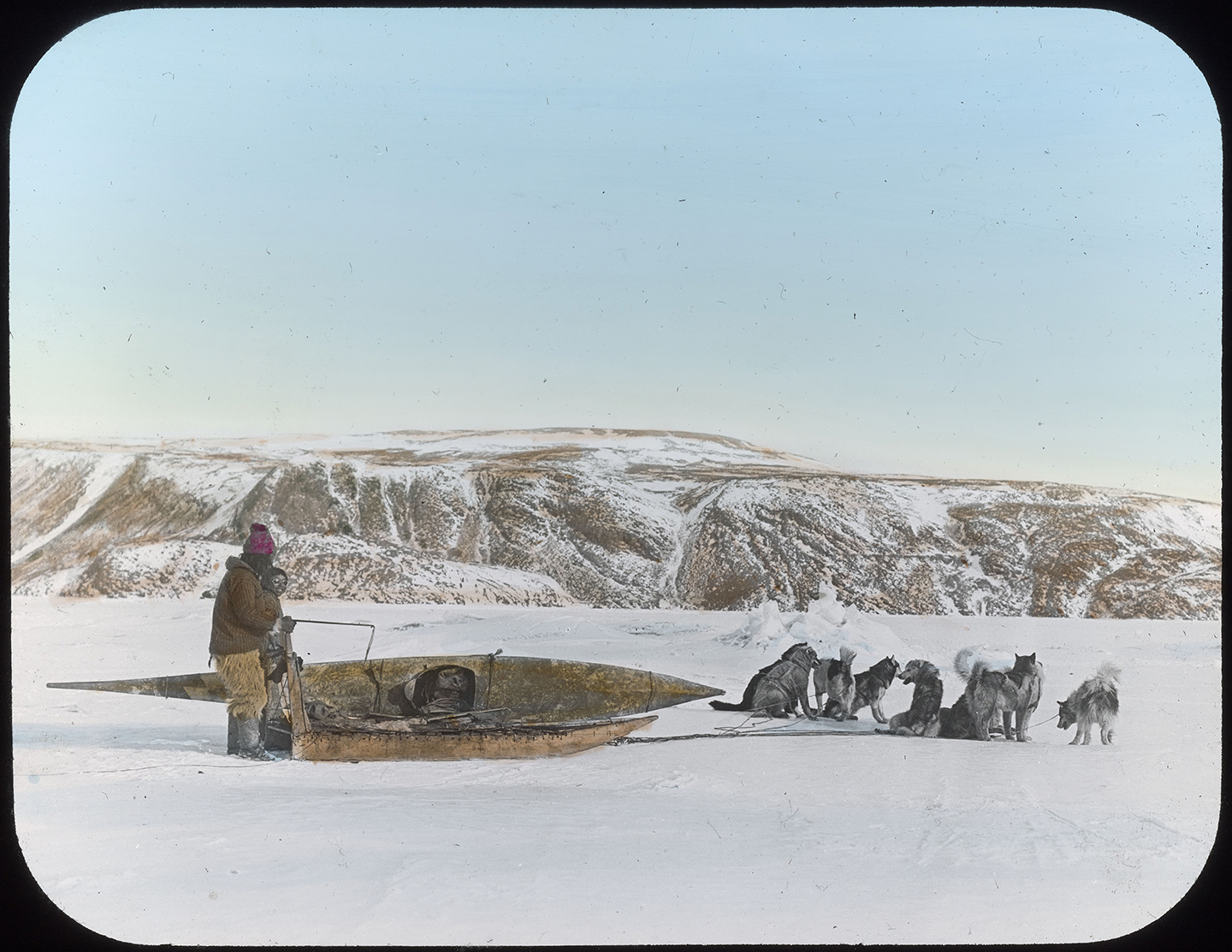
Hunters use dog teams to move between communities as well as to travel to hunting spots. Here a hunter and his son are heading to the ice edge with a kayak on their sledge. Once they reach open water they will launch the kayak to hunt sea mammals. With the dog team they can travel farther and carry home more meat than if they simply walked. Donald B. MacMillan, Dog Team with Kayak, Northwest Greenland, ca. 1915. Scan from hand-tinted glass lantern slide. Gift of Donald and Miriam MacMillan
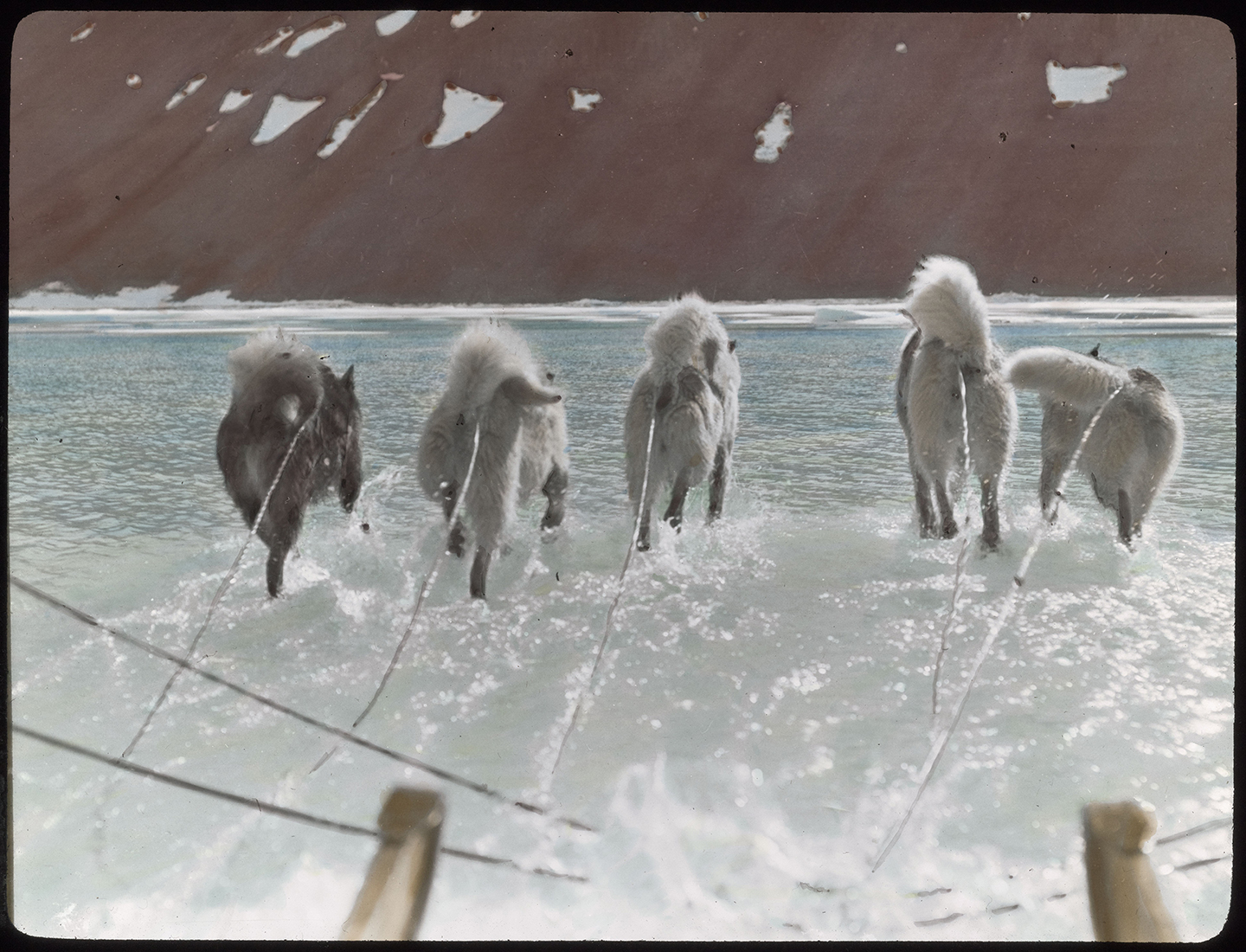
Running through a shallow melt pond, these dogs give the illusion of traveling over water. In the spring such ponds form on the surface of the ice before it becomes too soft for safe travel. As the climate warms, spring arrives earlier and earlier, limiting the time when it is safe to travel on the ice and reducing hunters’ ability to rely on dog teams. Donald B. MacMillan, Sledging in the Spring, Northwest Greenland, ca. 1920. Scan from hand-tinted glass lantern slide. Gift of Donald and Miriam MacMillan

